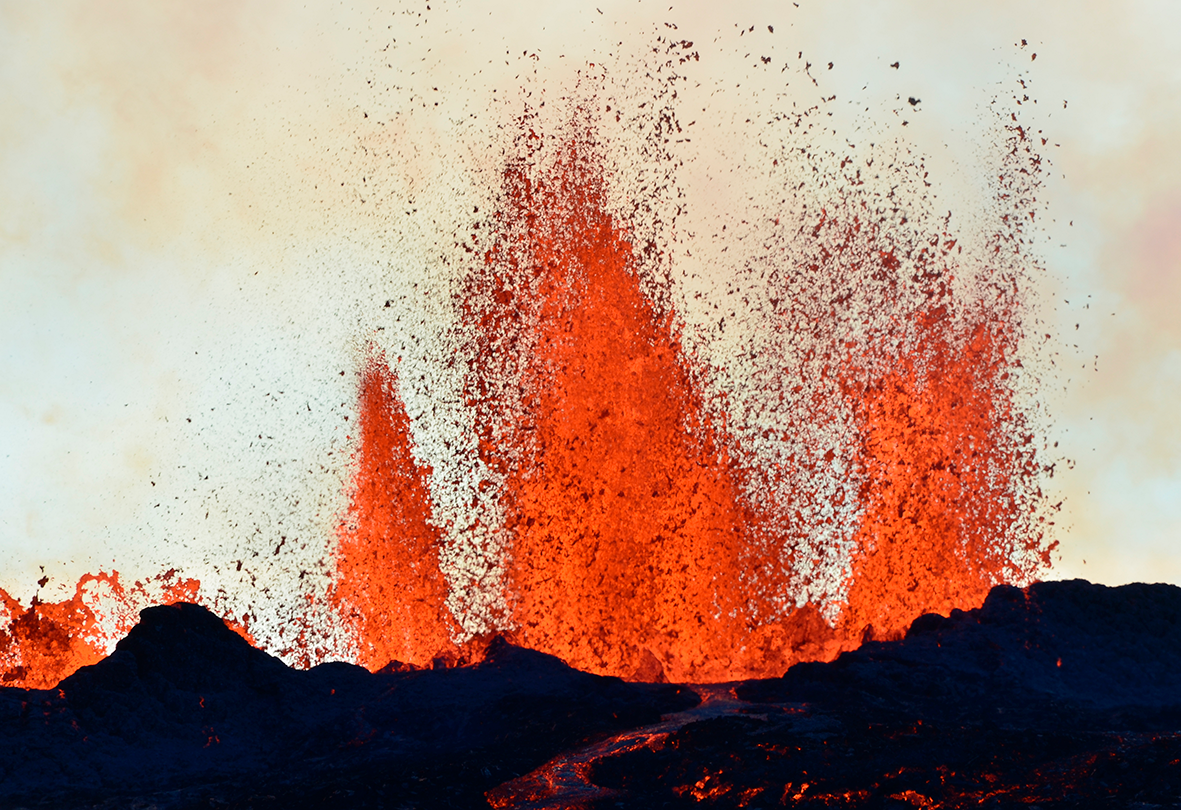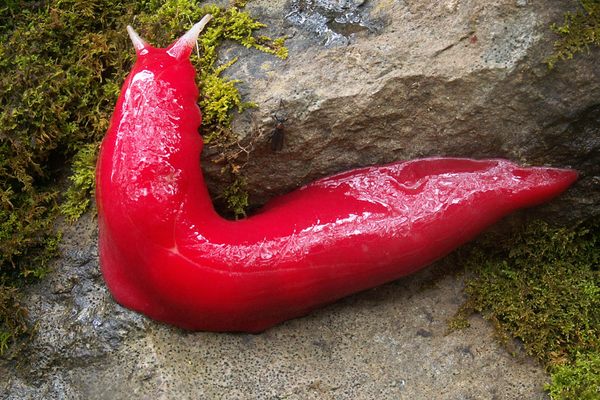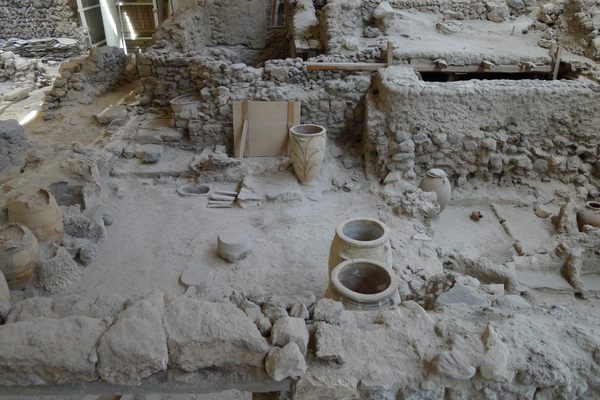What It’s Like To Watch a Volcano Collapse In Front Of You
The 190-day event was the largest caldera formation ever observed.

Lava eruption connected to the caldera collapse. (Photo: Joschenbacher/CC BY-SA 4.0)
There are only so many times in a person’s lifetime that a volcano collapses into itself, creating a giant bowl in the earth. Since 1900, only seven of these bowls—called calderas—are known to have formed. When the earth gives way, it’s a violent, lava-filled event. It’s not the easiest of geological events to observe directly.
In August 2014, though, scientists were watching when the ground around Bárdarbunga, a volcano near the center of Iceland, hidden underneath the island’s largest glacier, began to move.
Those first seismic shivers were the beginning of a rifting event that would last for six months and leave behind a giant indentation in the earth—the largest caldera ever to develop while scientists were monitoring its formation. The plains of lava expelled from beneath the volcano covered an area larger than the whole of Manhattan. There was so much lava that the resulting explosion connected to the caldera’s formation rated as the largest since 1783, not just in Iceland, but in all of Europe.

Bardarbunga and Holhuran (Photo: Milan Nykodym/CC BY-SA 2.0)
Throughout the six months of the caldera’s formation, four dozen scientists were working to understand exactly what was happening to the volcano. They watched it from space and from the sky, and they used GPS, sensors, and geobarometers to observe movements underground. They wanted to know what had set off the collapse and how it would develop.
What they found, as they report in a new Science paper, was in some ways quite tidy, and helps answer fundamental questions about how these dramatic events unfold.
“That’s the beauty of how nature operates,” says Magnus Gudmundsson, the study’s lead author and a professor of geophysics at the University of Iceland. “Sometimes very complicated events can be imagined in a simple way.”
The team of scientists was able to determine that, essentially, the caldera formed after a magma reservoir deep under the surface started extruding lava through a pipe-like exit. As that lava burst through the surface of the earth, after traveling about 28 miles, pressure on the roof of the magma chamber increased until the roof broke.
At the beginning of the event, though, none of this was obvious—not even that a caldera would form. When Bárdarbunga first started changing, on August 16, 2014, it was clear something unusual was happening. But it wasn’t until two or three weeks later that the scientists even noticed the caldera collapse.

Lava! (Photo: GFZ German Research Centre for Geosciences)
Volcanoes are often imagined in tropical locales, but this is a story of fire and ice. The mouth of Bárdarbunga is filled with ice; its sides covered by a glacier. When scientists fly over the volcano to measure the elevation of its surface, they go low, less than a tenth of a mile over the ice surface. “You’re not quite on the glacier, but you see small things very well,” says Gudmundsson. For months, the glacial ice covering the volcano looked unchanged. But even on the first flight, the sensitive altimeters the scientists carried showed what was happening beneath—the earth was sinking.
Around the same time that the scientists first observed that the caldera beginning to collapse, lava started pouring out of the earth. That eruption was at the Holuhraun lava field, miles from Bárdarbunga. Soon, it became clear that the two events were connected—the magma from underneath Bárdarbunga was traveling to Holuhraun and spilling out of the earth.
Even once they were able to connect the two events, though, the scientists weren’t sure what would happen next. Would the magma flow decline? Would it continue for a long time? Or—an outside possibility, but one they couldn’t discount—would the caldera itself erupt with magma?

The lava field was larger than Manhattan. (Photo: Peter Hartree/CC BY-SA 2.0)
As the event unfolded, smaller groups of scientists started monitoring and studying different aspects of the collapse and eruption, like teams of medical specialists trying to treat a critical patient. Seismologists looked at the earthquakes. Geochemists measured the pressure of the magma and the depth of the chamber where it had been contained. Experts in GPS were able to say how the crust of the earth was being split apart and how wide the gap was. Others used satellite data to map the formation from high above. Glaciologists modeled the ice flow above the volcano.
Eventually, by pulling all these different models and data sets together, the scientists were able to piece together the story. The magma reservoir had been about 7.5 miles beneath the surface—so deep that it was unlikely the magma ever would have exploded out of the caldera. Once the magma began leaving that reservoir, the pressure on the roof increased until it collapsed. The area of the caldera that resulted was the largest ever observed; in volume it was the fourth largest caldera collapse on record. The event as a whole took 190 days—the second largest recorded. (The record-holder took longer than a year.)
To observe the formation of a caldera as it happened was an unique experience for these scientists: it’s unlikely that they’ll have the chance more than once or twice—if ever again—in the course of their careers. The purpose of this research is not just to understand this one collapse, though: the better researchers understand how this type of explosion—among the most dangerous of volcanic eruptions—happens, the more prepared they can be for the next one.
Some of the largest eruptions ever, Gundersson says, look a lot like this one, where the eruption of lava happened far from the main volcano. “I think this is showing us how these eruptions in most likelihood took place,” he says. Magma had accumulated under a large volcano, at a considerable depth. When the rifting event began, tectonic forces opened the reservoir and, as the magma flowed out, the roof of the reservoir collapsed.
“It’s not a new idea, but we understand much better how that may have happened,” he says. Which means that next time the earth starts rumbling in this way, volcano experts will have a better idea what comes next—and can warn people to get out of the way.




























Follow us on Twitter to get the latest on the world's hidden wonders.
Like us on Facebook to get the latest on the world's hidden wonders.
Follow us on Twitter Like us on Facebook